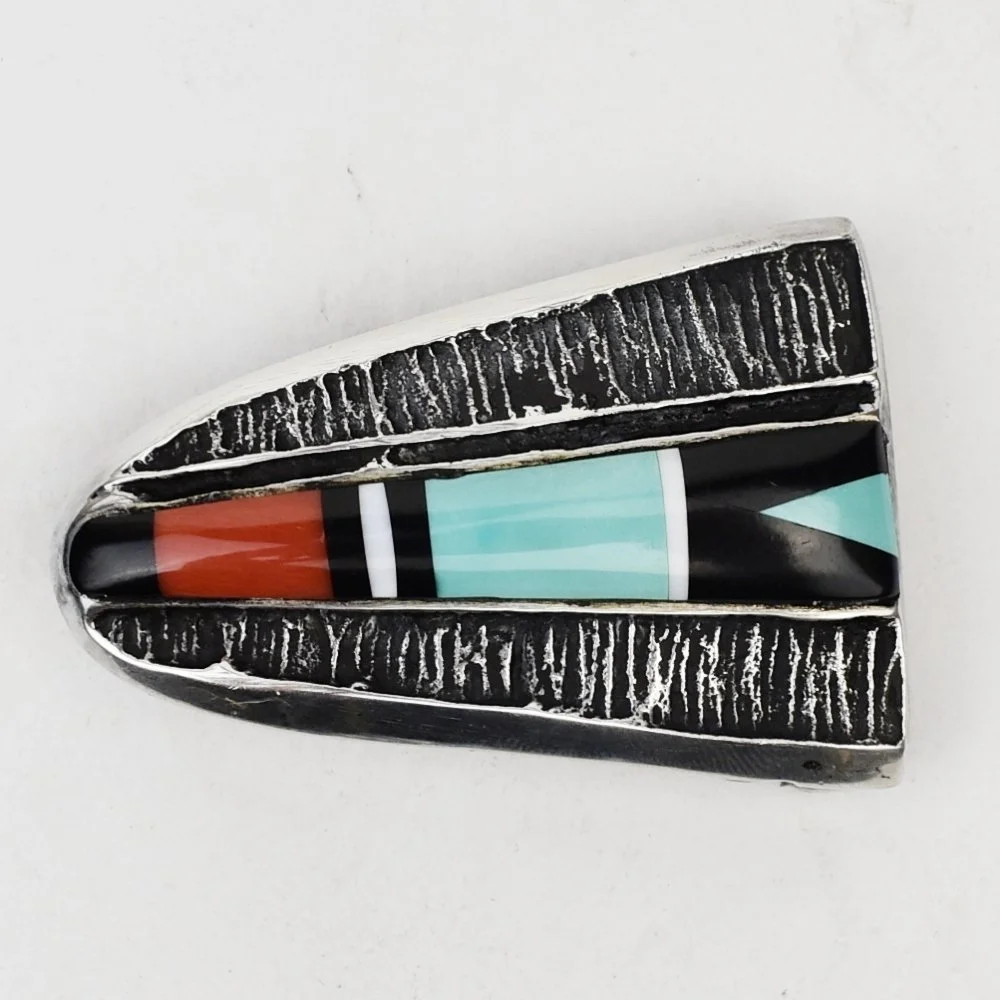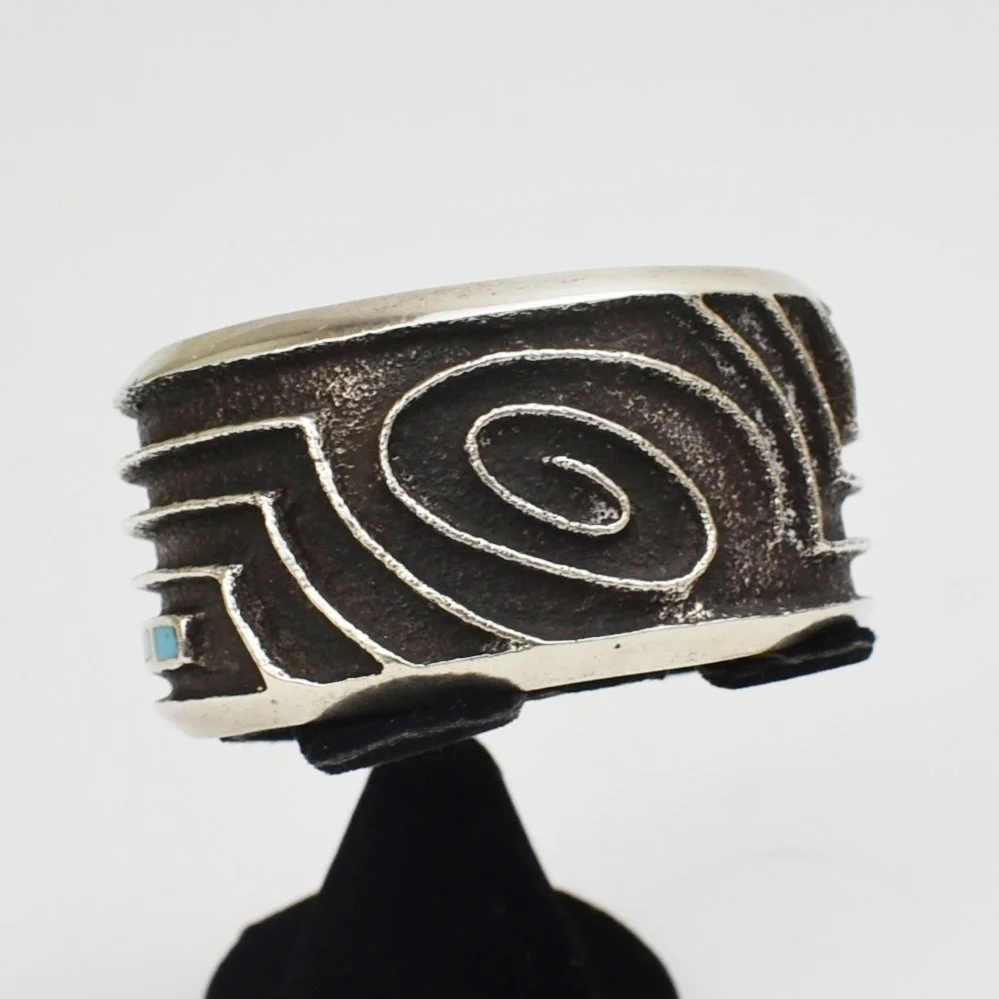 Image 1 of 1
Image 1 of 1


Monongye, Preston
(Hopi, 1927-1987). Though born to Mexican and Mission Indian parents, he was adopted into the Monongye family at Hopi as a young boy and was always very vocal about how much being Hopi meant to him. He was considered, along with Loloma, as the most important figure in the "New Indian Jewelry" movement of the 1970s. His greatest skill was in casting silver pieces, a technique at which he had few equals. Due to health problems, his production was not as great as that of Loloma and Begay, the other two great post-1950 Southwestern Masters.
(Hopi, 1927-1987). Though born to Mexican and Mission Indian parents, he was adopted into the Monongye family at Hopi as a young boy and was always very vocal about how much being Hopi meant to him. He was considered, along with Loloma, as the most important figure in the "New Indian Jewelry" movement of the 1970s. His greatest skill was in casting silver pieces, a technique at which he had few equals. Due to health problems, his production was not as great as that of Loloma and Begay, the other two great post-1950 Southwestern Masters.
Available works:



